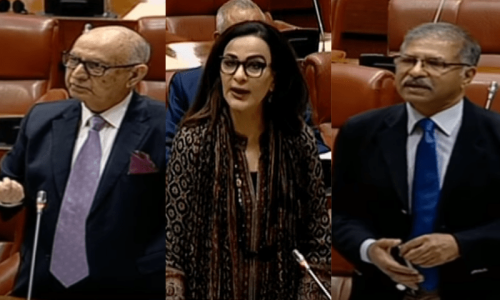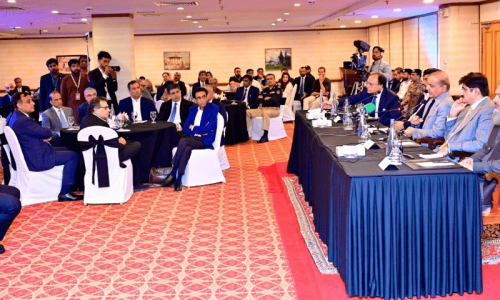
Fauzia Naheed, who began making cotton and fabric dolls 40 years ago, has been struggling to keep the art of traditional doll-making alive since. With no formal training, Ms Naheed, who also makes puppets, learned how to make dolls from her family, where dolls were made using old pieces of fabric. It is now her profession, and one in which she has been honoured with awards and medals. Ms Naheed has exhibited her work in Islamabad and Rawalpindi and in London. Dawn spoke to her while she was at the Rawalpindi Arts Council exhibiting her latest collection.
Q: What drew you to doll-making?
A: It was my hobby to make dolls and bears from cotton and fabric in my childhood. When I got older, I needed money, so I started making dolls for other girls and they paid me for it. After I got married, I had no other skill to increase income and make ends meet, so I improved my skills as a doll maker and exhibited by work. I received praise, and then I started this.
However, I must say it is a long process to make a doll. It takes me a day to make one doll. People at the local level are not interested, but foreigners are. I mostly make dolls in traditional bridal costumes and jewellery.
Q: What is difference between the traditional dolls and modern dolls?
A: Nowadays, more dolls are available in the market and they are good, but traditional dolls are still popular because they are easy to handle and close to the local culture.
Girls want Elsa and Anna dolls from [Disney’s] Frozen, Barbie dolls and traditional dolls, but people who come from abroad buy these dolls for decoration purposes that present local culture.
I can’t say traditional dolls are better, but in the past girls decorated dolls using their own ideas and made dolls’ faces the way they liked. It is the initial training for girls to make things perfect and learn self grooming.
Q: Are young people interested to learn this traditional art?
A: Few people are interested in learning this art. Most people want ready-made things and decorate their rooms with such traditional things. I have taught the art to many girls, but they learn this for themselves.
The art is dying, and there is no effort from the government side to save it. In the past, girls made their own dolls and clothes, but now people have less time and girls are busy studying so they do not want to waste their time on such things and [instead] get ready-made dolls to play with.
Lok Virsa and the RAC have conducted workshops, but few people participated. Locals did not want to make dolls but foreigners were more interested; they wanted dolls wearing traditional Pakistani dresses.
Q: Do you think puppetry is dying art in the country?
A: Like other fine arts, puppetry is a dying art for many reasons. The government should patronise this art form. There is need to protect doll and puppet-making and such training should be given to children in schools.
Published in Dawn, July 27th, 2017











































